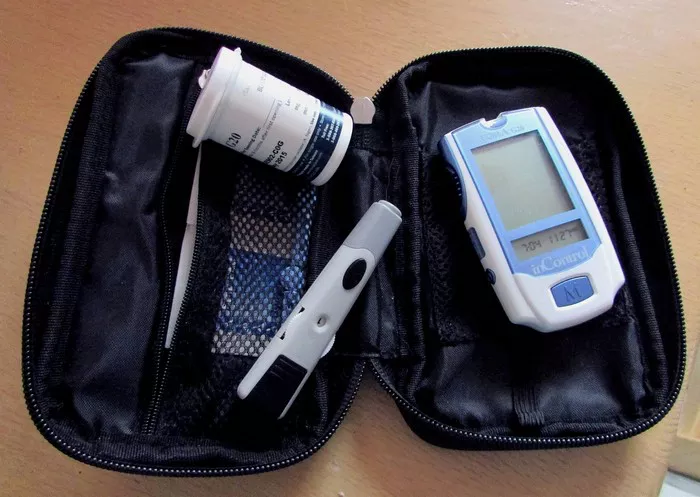Diabetes, a chronic condition characterized by high blood sugar levels, has become a global health concern. According to the International Diabetes Federation, approximately 463 million adults were living with diabetes in 2019, and this number is projected to rise to 700 million by 2045. However, the good news is that type 2 diabetes, which accounts for the majority of diabetes cases, is largely preventable through lifestyle modifications, with diet playing a pivotal role.
Dietary choices have a significant impact on blood sugar control and insulin sensitivity, key factors in preventing and managing diabetes. Certain foods can help regulate blood sugar levels, reduce insulin resistance, and lower the risk of developing diabetes. By incorporating these foods into their diet and making other healthy lifestyle changes, individuals can take proactive steps to prevent or delay the onset of diabetes.
List of Beneficial Foods
Fatty Fish: Fatty fish such as salmon, mackerel, and sardines are rich in omega-3 fatty acids, which have been linked to numerous health benefits, including a reduced risk of chronic conditions like heart disease and diabetes. Omega-3 fatty acids help improve insulin sensitivity, reduce inflammation, and lower triglyceride levels, all of which contribute to better blood sugar control.
Leafy Greens: Leafy green vegetables like spinach, kale, and Swiss chard are low in carbohydrates and calories but packed with essential nutrients such as vitamins, minerals, and antioxidants. Their high fiber content slows down the digestion and absorption of carbohydrates, preventing spikes in blood sugar levels. Additionally, leafy greens are rich in magnesium, a mineral that plays a crucial role in glucose metabolism and insulin action.
Whole Grains: Unlike refined grains, which have been stripped of their fiber and nutrients during processing, whole grains retain their bran and germ, making them rich in fiber, vitamins, and minerals. Foods like brown rice, quinoa, oats, and whole wheat bread have a lower glycemic index, meaning they cause a slower and more gradual increase in blood sugar levels compared to refined grains. Consuming whole grains regularly can help maintain stable blood sugar levels and reduce the risk of type 2 diabetes.
Nuts and Seeds: Nuts and seeds are excellent sources of healthy fats, fiber, protein, and antioxidants, all of which contribute to better blood sugar control. The monounsaturated and polyunsaturated fats found in nuts and seeds help improve insulin sensitivity and reduce inflammation in the body. Additionally, their high fiber content slows down the absorption of carbohydrates, preventing rapid spikes in blood sugar levels.
Legumes: Beans, lentils, chickpeas, and other legumes are rich in plant-based protein, fiber, and complex carbohydrates. The combination of protein and fiber helps promote satiety and stabilizes blood sugar levels, preventing the rapid fluctuations that can occur after consuming high-carbohydrate meals. Legumes are also a good source of soluble fiber, which forms a gel-like substance in the digestive tract, slowing down the absorption of sugar and improving glycemic control.
Foods to Limit or Avoid
While certain foods can help prevent diabetes, others can have the opposite effect and contribute to insulin resistance, weight gain, and elevated blood sugar levels. It’s important to limit or avoid the following:
Refined Carbohydrates: Foods made with refined grains, such as white bread, white rice, and sugary cereals, are quickly digested and can cause sharp spikes in blood sugar levels. These foods lack the fiber and nutrients found in whole grains and can contribute to insulin resistance and weight gain when consumed in excess.
Sugary Drinks: Beverages like soda, fruit juice, energy drinks, and sweetened iced tea are loaded with added sugars and provide empty calories devoid of any nutritional value. Regular consumption of sugary drinks can lead to weight gain, insulin resistance, and an increased risk of type 2 diabetes.
Processed Meats: Processed meats such as bacon, sausage, hot dogs, and deli meats are high in unhealthy fats, sodium, and preservatives. They have been linked to an increased risk of type 2 diabetes, heart disease, and certain cancers. Instead of processed meats, opt for lean sources of protein such as poultry, fish, tofu, or legumes.
Practical Tips for Incorporating These Foods into a Diet
Incorporating diabetes-preventive foods into your diet doesn’t have to be complicated. Here are some practical tips to help you get started:
Meal Planning and Preparation: Plan your meals ahead of time to ensure you have nutritious options readily available. Stock up on healthy staples like fatty fish, leafy greens, whole grains, nuts, seeds, and legumes. Preparing meals in advance can save time and help you make healthier choices throughout the week.
Balanced Meals: Aim for balanced meals that include a variety of nutrient-rich foods from all food groups. For example, pair grilled salmon with a side of quinoa and steamed broccoli, or enjoy a colorful salad topped with grilled chicken, mixed greens, cherry tomatoes, avocado, and a sprinkle of nuts or seeds.
Portion Control: Pay attention to portion sizes to avoid overeating, especially when it comes to calorie-dense foods like nuts, seeds, and whole grains. Use measuring cups, spoons, or a food scale to portion out servings, and avoid eating straight from the package, which can lead to mindless eating.
Variety: Incorporate a wide variety of foods into your diet to ensure you’re getting all the nutrients your body needs. Experiment with different types of fish, leafy greens, whole grains, nuts, seeds, and legumes to keep your meals interesting and flavorful.
Consultation with Healthcare Professionals
While making dietary changes can help prevent diabetes, it’s essential to consult with a healthcare provider or a registered dietitian before making any significant changes to your diet, especially if you have existing health conditions or are taking medications. A healthcare professional can help you create a personalized meal plan that takes into account your individual nutritional needs, preferences, and risk factors for diabetes. They can also provide guidance on portion sizes, meal timing, and strategies for long-term success.
Conclusion
In conclusion, adopting a healthy diet that includes fatty fish, leafy greens, whole grains, nuts, seeds, and legumes can play a crucial role in preventing diabetes and promoting overall health and well-being. By making informed food choices, practicing portion control, and seeking guidance from healthcare professionals, individuals can take control of their health and reduce their risk of developing diabetes in the future.

























